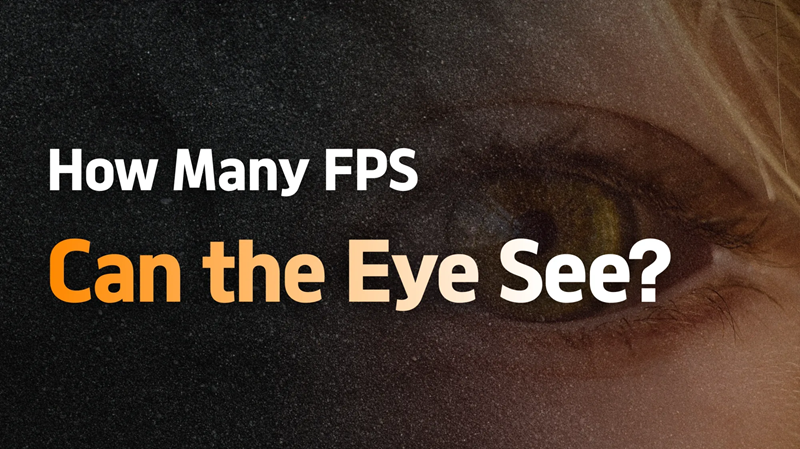How Many FPS Can the Human Eye Really See?

When it comes to gaming, animation, or even just watching videos, people often ask: “How many frames per second can the human eye actually see?” The answer isn’t as simple as a single number — it depends on several factors including motion, contrast, and the environment.
Understanding FPS and the Human Eye
Frames Per Second (FPS) measures how many images your screen displays per second. The higher the FPS, the smoother motion appears. Common monitor refresh rates are:
60 Hz → 60 FPS
144 Hz → 144 FPS
240 Hz → 240 FPS
Many assume that the human eye can only see around 60 FPS, but that’s a simplification. While 60 FPS is enough for smooth motion in most cases, the eye can perceive changes well beyond that — especially in high-speed motion or bright environments.
Perception vs Reality
The human eye doesn’t see in “frames,” but it can detect motion differences. Higher FPS reduces motion blur and input latency, which is why competitive gamers often prefer 144 Hz or 240 Hz monitors.
For example:
Gaming: Rapid movements in first-person shooters or racing games feel smoother at 120–240 FPS.
Roleplay environments (like Second Life, IMVU, GTA FiveM RP): FPS affects how fluid avatars move and how responsive camera rotation feels.
Movies and video: Standard movies are 24 FPS, which our brain interprets as smooth motion because of motion blur.
Factors Affecting Perceived FPS
Motion Complexity: Fast-moving objects make higher FPS more noticeable.
Lighting and Contrast: Bright environments can highlight frame differences.
Display Quality: Screen refresh rate, response time, and input lag all play a role.
Shaders and Graphics Effects: In platforms like Second Life, enabling atmospheric shaders or higher graphics settings can sometimes improve perceived smoothness, even if the FPS counter shows a small drop.
Interestingly, sometimes increasing graphics settings can slightly increase FPS, because optimizations in certain shaders or engine code take effect — a counterintuitive but real phenomenon.
The Takeaway
For casual play or watching videos: 60 FPS is sufficient.
For fast-paced gaming or immersive roleplay: 120–240 FPS improves smoothness and responsiveness.
The human eye doesn’t have a hard FPS limit; it’s more about detecting changes in motion and how the brain interprets them.
Conclusion: Don’t get too hung up on a specific number. FPS matters more in interactive scenarios, and your perception depends on what you’re doing — gaming, roleplay, or just watching a film. Even in roleplay worlds like GTA RP or Second Life, higher FPS improves the experience subtly but noticeably.

